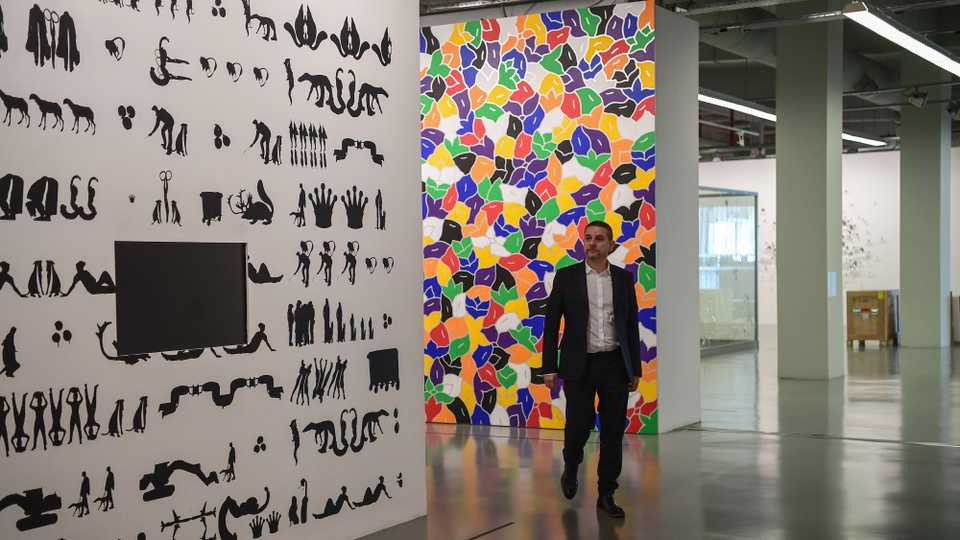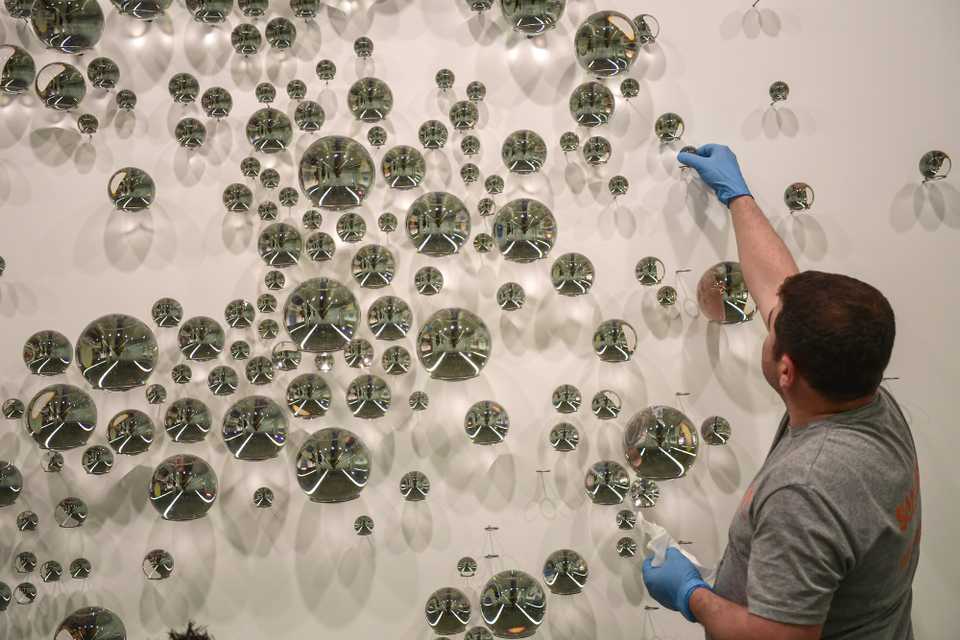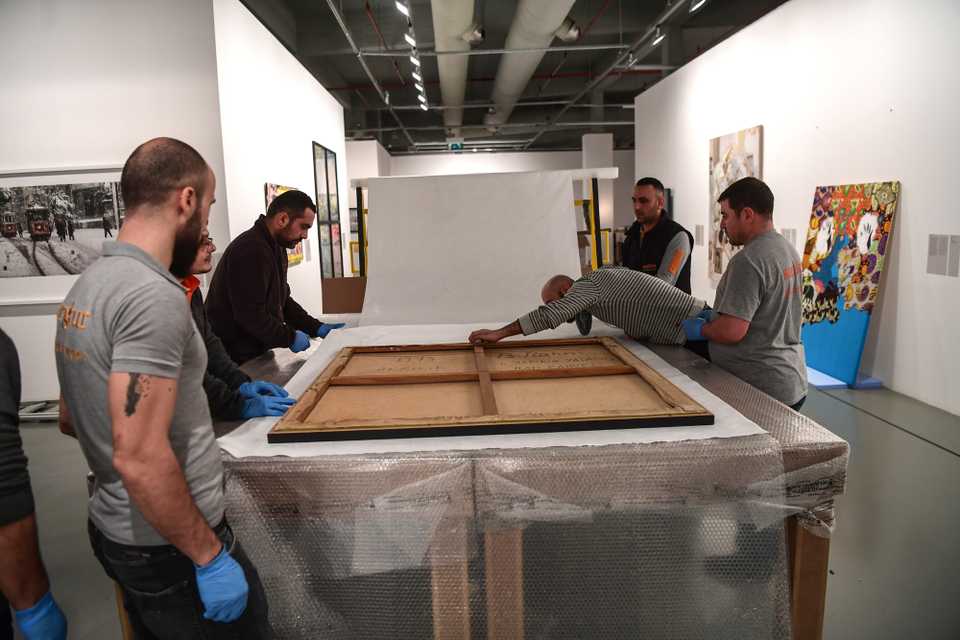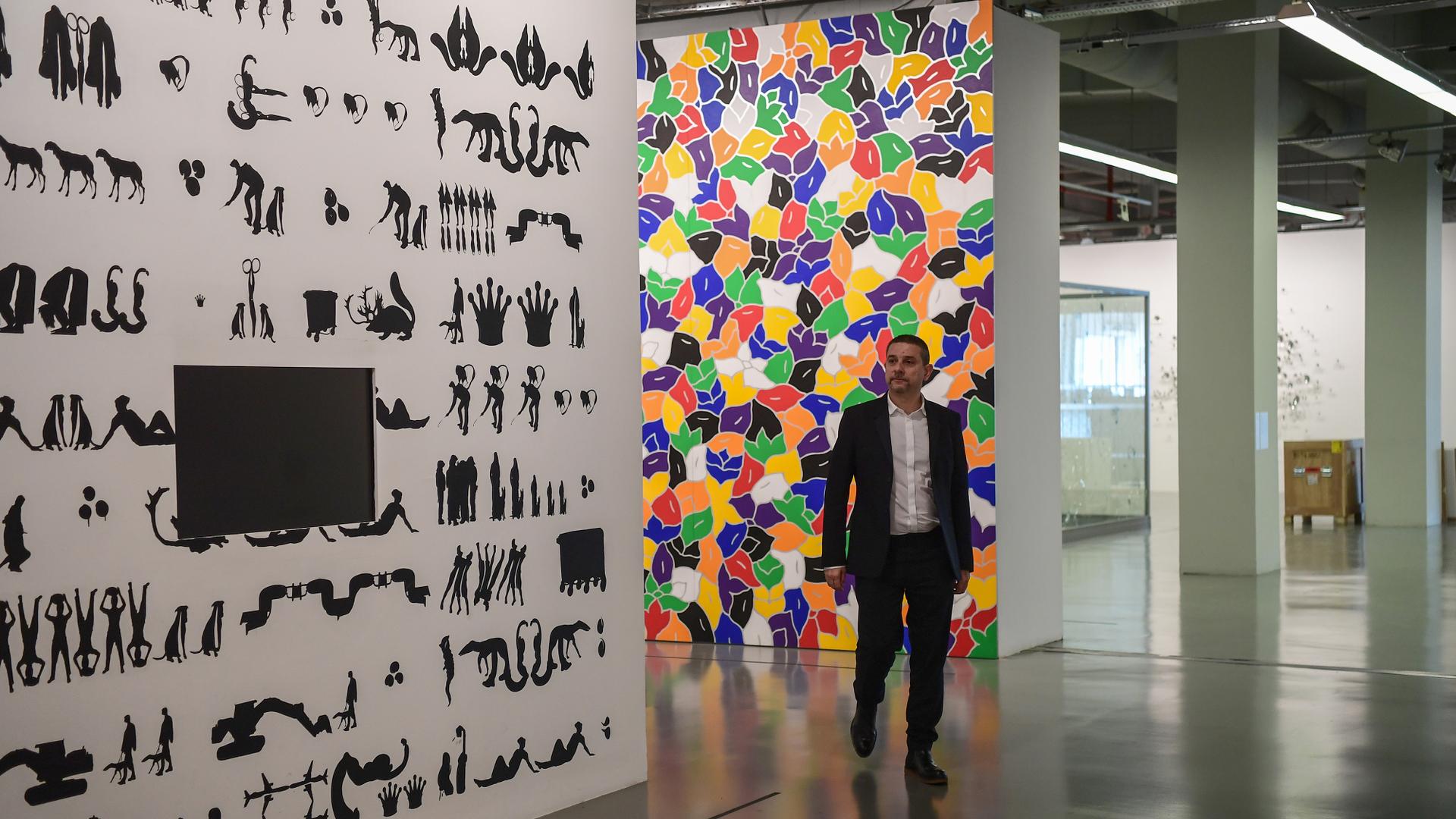
It’s a busy afternoon at Istanbul Modern, Turkey’s premier modern art museum, and the gallery is packed with visitors taking selfies or discussing the artworks in hushed tones.
Some pause in front of a massive canvas by celebrated German artist Anselm Kiefer, while others look in amazement at a masterpiece by Turkish abstract painter Fahrelnissa Zeid or gasp at iconic black and white images of old Istanbul by legendary local photographer Ara Guler.
Since opening on December 11, 2004, Istanbul Modern, spectacularly situated on the Bosphorus with a view of the Ottoman era Topkapi Palace, has become a symbol of 21st century Istanbul, open to outside influences but proud of its past.
The rapid success of the museum was one of the reasons Newsweek magazine famously declared in a 2005 cover story that Istanbul was “one of the coolest cities” in the world.
But within a few days of the visit, all the artworks will have been taken down, carefully catalogued and put into protective cases.
The building, a maritime warehouse known as Antrepo No. 4 in Turkish and beloved by many Istanbulites since the museum’s opening, will be demolished.
However it will not be the end for Istanbul Modern.

Nourish our souls
After closing its doors on March 18, the museum will reopen in a historic mansion in the central Beyoglu district in May.
The mansion will be a temporary home until a new museum is built on the site of the old Istanbul Modern to showcase its collection to even greater effect.
The new building will be designed by Italian architect Renzo Piano, who was behind London’s iconic skyscraper The Shard, and is expected to be finished in three years.
Istanbul Modern’s director Levent Calikoglu admitted there was some sense of ‘huzun’, the Turkish word for melancholy, over leaving the building that had been the museum’s home for the last 14 years.
“Yes, in fact, we have a kind of melancholy and a nostalgia,” he told AFP inside the museum, which was devoid of visitors as staff carefully took down and packaged the art.
“But a new future is in front of us and we have a completely different aim. This new building will bring a new vision to the art world and to Istanbul.”
The opening of Istanbul Modern was supported at the time by President Recep Tayyip Erdogan, then prime minister, who gave his approval for the use and refurbishment of the maritime warehouse.
For some, the museum’s sheer existence was proof that the arts could prosper in Turkey under Erdogan’s Islamic-rooted ruling party, which came to power in 2002.
Artistic expression in Turkey has had some difficult periods since, but Istanbul Modern is proud not just that it has attracted seven million visitors since opening but that they have come from right across the country’s hugely diverse society.
And on one of the museum’s final opening days before its temporary closure it was filled with Turks of all ages and backgrounds, as well as a sprinkling of tourists.
“There are things here that I am seeing for the first time, it’s interesting and I appreciate this,” said Gokberk, a 19-year-old who had come with his friends.
Visitor Nesrin Aktar, a fan of the museum, hoped the revamp would go smoothly.
“We come to see the exhibitions, to nourish our souls, that really inspires us.”

500-year timescale
The main financial backers for the new project are the museum’s founding sponsor Eczacibasi Group, a major backer of the arts in Turkey, and the Dogus Group-Bilgili Holding conglomerate.
As with many art projects in Turkey, there is no state funding.
The new museum will be located in a specially dedicated area within the new $1-billion (815-million-euro) Galataport project, which aims to revitalise Istanbul’s historic harbourside with new living and office spaces beside an overhauled cruise terminal.
But it has not met with universal enthusiasm.
The Istanbul Chamber of Architects has denounced the Galataport project as being in violation of planning rules – a claim rejected by its developers – and risking “causing damage that will not be able to be reversed”.
In an interview with the Hurriyet daily, Oya Eczacibasi, the chairwoman of the museum’s board, rejected concerns that the new museum would lose its identity within Galataport.
She said Galataport will “add a lot to Istanbul” when completed, insisting Istanbul Modern’s leadership will remain in full control of the museum’s programme.
Calikoglu said the Renzo Piano building, whose design is set to be unveiled later in 2018, should become a new symbol for Istanbul.
“For this building he is looking on a timescale of 500 years, he is not looking at a timescale of 20 years,” Calikoglu said.










Discussion about this post